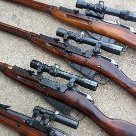-
Posts
8,149 -
Joined
-
Last visited
Reputation Activity
-
 allanyed reacted to Scottish Guy in alcoholic stain on blocks
allanyed reacted to Scottish Guy in alcoholic stain on blocks
I´ve done it a couple of times (not related to scale models but under different circumstances) also paper (which is somehow also cellulose - somehow wood) for staining it to look old (for bookbinding). It works well and it doesn´t harm the wood or paper in any way at least not that I noticed. I`ve done this for years now and never had any bad experiences with it.
Micha
-
 allanyed got a reaction from mtaylor in Hello from Iowa
allanyed got a reaction from mtaylor in Hello from Iowa
Love the Pave Hawk model! WELCOME ABOARD!
Allan
-
 allanyed got a reaction from mtaylor in alcoholic stain on blocks
allanyed got a reaction from mtaylor in alcoholic stain on blocks
Hi Phil
Black tea has a slightly low pH so probably not harmful to the wood. Reading up on its use on wood, I found the following:
Tea can be a safe and natural way to clean wood floors. Black tea contains tannins, which can enhance the wood's color and depth, and add a light, warm "stain" that brings out the wood's natural warm tones. The tannins also naturally clean, enhance, and protect wood
Sounds like it might be a good idea but I have no experience with using tea. Hopefully some other member has some experience with using tea they can share or you can be our pioneer and give it a try😀
Allan
-
 allanyed got a reaction from Baker in Mayflower 1620 by rlwhitt - Model Shipways - 1:76
allanyed got a reaction from Baker in Mayflower 1620 by rlwhitt - Model Shipways - 1:76
Extremely well done! Looking at the gratings they look "grate" The battens run fore and aft and there do not appear to be any open holes next to the head ledges or coamings which is often missed in some builds. Are these supplied with the kit or are they aftermarket or scratch made? Kudos!
Allan
-
 allanyed got a reaction from Scottish Guy in Ship Model Building - Gene Johnson
allanyed got a reaction from Scottish Guy in Ship Model Building - Gene Johnson
Scott
Have you followed Ed Tosti's build log on the clipper Young America here at MSW? https://modelshipworld.com/topic/10678-young-america-1853-by-edt-finished-196-pob-extreme-clipper/#comment-322547
If you are interested in that build Ed drew all the plans and authored a three volume set of books available from Seawatch Books. https://seawatchbooks.com/collections/edward-j-tosti
Allan
-
 allanyed got a reaction from Canute in alcoholic stain on blocks
allanyed got a reaction from Canute in alcoholic stain on blocks
Hi Phil
Black tea has a slightly low pH so probably not harmful to the wood. Reading up on its use on wood, I found the following:
Tea can be a safe and natural way to clean wood floors. Black tea contains tannins, which can enhance the wood's color and depth, and add a light, warm "stain" that brings out the wood's natural warm tones. The tannins also naturally clean, enhance, and protect wood
Sounds like it might be a good idea but I have no experience with using tea. Hopefully some other member has some experience with using tea they can share or you can be our pioneer and give it a try😀
Allan
-
 allanyed got a reaction from GrandpaPhil in alcoholic stain on blocks
allanyed got a reaction from GrandpaPhil in alcoholic stain on blocks
Hi Phil
Black tea has a slightly low pH so probably not harmful to the wood. Reading up on its use on wood, I found the following:
Tea can be a safe and natural way to clean wood floors. Black tea contains tannins, which can enhance the wood's color and depth, and add a light, warm "stain" that brings out the wood's natural warm tones. The tannins also naturally clean, enhance, and protect wood
Sounds like it might be a good idea but I have no experience with using tea. Hopefully some other member has some experience with using tea they can share or you can be our pioneer and give it a try😀
Allan
-
 allanyed got a reaction from rlwhitt in Mayflower 1620 by rlwhitt - Model Shipways - 1:76
allanyed got a reaction from rlwhitt in Mayflower 1620 by rlwhitt - Model Shipways - 1:76
Rick,
Wonderfully executed planking and detailing. I bet your rigging would be a delight to watch as well, but as it is has been a treat to follow.
Allan
-
 allanyed got a reaction from rvchima in HMS Sphinx 1775 by mugje - Vanguard Models - 1:64
allanyed got a reaction from rvchima in HMS Sphinx 1775 by mugje - Vanguard Models - 1:64
That was my go to as well and it works very well. Alternatively I found a hot air gun works more easily for me. Either way, the methodology is the same and gets the job done. There are a lot of choices of guns from Genesis to Bosch at reasonable prices from many stores or on line.
Allan
-
 allanyed got a reaction from mtaylor in Masts and Bowsprit - Glue or Not?
allanyed got a reaction from mtaylor in Masts and Bowsprit - Glue or Not?
I thought contemporary drawings of masts may help, including the shape of the foot or heel but of the ten high res plans that I have found, to my surprise none of them show the heel itself as the drawings stop at what appears to be where top of the step would be. Lees does not address the heel of the fore, main, or mizzen mast that I can find in The Masting and Rigging English Ships of War. Hopefully some member can shed more light on this. Peter Goodwin does give some detail on the steps in The Construction and Fitting of English Man of War as follows:
In general the step for each mast consisted of a large baulk of timber, usually oak, fashioned in such a manner that it straddled the keelson. A mortice was cut vertically into the upper surface in which the tenon of the heel of the mast sat....... The mortice and tenon were always made to the following dimension: The tenon at the heel of the mast was half the diameter of the mast in the fore and aft plane, and had a width two thirds of the diameter of the mast athwartships. The depth of the of the tenon was usually about half the diameter of the mast.
I suspect this is generally good information but would be very surprised if were not variations in the dimensions.
Allan
-
 allanyed reacted to Mark Pearse in Ranger type yacht by Mark Pearse - 1:12 - SMALL
allanyed reacted to Mark Pearse in Ranger type yacht by Mark Pearse - 1:12 - SMALL
I've started on the keel. The shape is not complex, so it can be modelled pretty easily. For stability & strength I decided to make it from horizontal strips of timber, dowelled with brass. The timber is a nice straight-grained piece of Huon Pine. The keel is not a difficult shape: it fairs with the hull, but essentially it appears to be even from there down to the bottom of the keel.
This is the keel side on. The yellow bands will be done in strips of timber.
The strips, in plan:
The timber pieces cut to shape, plus the 1/8th brass rod:
Stacked & trimmed, & sitting on the hull. It doesn't look quite right, but it will. The hull has more sanding to get it down to the right size, I have left that to assist get the fairing with the keel right.
thanks all
-
 allanyed got a reaction from Bill Morrison in HMS Diana 1794 by newbee - Caldercraft - 1/64
allanyed got a reaction from Bill Morrison in HMS Diana 1794 by newbee - Caldercraft - 1/64
To me, the most remarkable thing is that those craftsmen 250 years ago had no electrical tools at all. The patience and skill they had to create these works of art is incredible.
Allan
-
 allanyed reacted to Keith Black in Masts and Bowsprit - Glue or Not?
allanyed reacted to Keith Black in Masts and Bowsprit - Glue or Not?
I glued both mast and bowsprit. That way should someone if the future find my humble model worthy of restoration I'll know because their curses will reach my distant ears.
-
 allanyed got a reaction from Scottish Guy in Masts and Bowsprit - Glue or Not?
allanyed got a reaction from Scottish Guy in Masts and Bowsprit - Glue or Not?
I thought contemporary drawings of masts may help, including the shape of the foot or heel but of the ten high res plans that I have found, to my surprise none of them show the heel itself as the drawings stop at what appears to be where top of the step would be. Lees does not address the heel of the fore, main, or mizzen mast that I can find in The Masting and Rigging English Ships of War. Hopefully some member can shed more light on this. Peter Goodwin does give some detail on the steps in The Construction and Fitting of English Man of War as follows:
In general the step for each mast consisted of a large baulk of timber, usually oak, fashioned in such a manner that it straddled the keelson. A mortice was cut vertically into the upper surface in which the tenon of the heel of the mast sat....... The mortice and tenon were always made to the following dimension: The tenon at the heel of the mast was half the diameter of the mast in the fore and aft plane, and had a width two thirds of the diameter of the mast athwartships. The depth of the of the tenon was usually about half the diameter of the mast.
I suspect this is generally good information but would be very surprised if were not variations in the dimensions.
Allan
-
 allanyed got a reaction from mtaylor in Masts and Bowsprit - Glue or Not?
allanyed got a reaction from mtaylor in Masts and Bowsprit - Glue or Not?
If the foot of the mast is properly shaped to being square and rests in a square hole in the step it will not rotate and the rigging will hold it down. If the mast is round at the foot and can twist while rigging is applied it would probably be better being glued in place.
Allan
-
 allanyed reacted to Jaager in Ship Model Building - Gene Johnson
allanyed reacted to Jaager in Ship Model Building - Gene Johnson
The 3rd edition that I have has two foldout sheets - not all that large. They are not what I would call plans, never mind "working plans".
The missing plans are no loss. The book itself was bush league in its time.
The S.I. sells 1/4" scale copies of the plans in Chapelle's books. There is a fair selection of 1850's clipper ships.
The site with downloads of the plans from Wm Webb's Folio has lines and mast/sail plans for Black Hawk - Challenge - Comet - Flying Dutchman - Gazelle - Swordfish - Young America
https://modelshipworld.com/topic/36455-ship-plan-sources-william-h-webb-plans-and-a-japanese-topsail-schooner/
The clippers were about as large as a wooden sailing vessel could be. This puts them in an unfortunate situation. A model with a scale large enough to include detail is also one that will take over the room that it is in. A model whose size is one that you can live with will require miniaturist skills. See the work of @rwiederrich in the scratch section for a view of what is involved.
-
 allanyed reacted to hof00 in Deck Planking Shift of Butts - Flying Cloud 1851
allanyed reacted to hof00 in Deck Planking Shift of Butts - Flying Cloud 1851
Hi Alan,
Many thanks for that.
Gives me some good ideas to ponder.
Looks like a "Four Butt" Shift?
Cheers and Regards,
Harry.
-
 allanyed got a reaction from Scottish Guy in Hello from Iowa
allanyed got a reaction from Scottish Guy in Hello from Iowa
Love the Pave Hawk model! WELCOME ABOARD!
Allan
-
 allanyed got a reaction from mtaylor in Spanish Galleon Keel Wood?
allanyed got a reaction from mtaylor in Spanish Galleon Keel Wood?
I believe the most common species for keels were oak and elm as pine was relatively weak for large vessels. Regardless you may find all of these are much too grainy for your model. The below shows these species compared to a couple other choices commonly used on model ships, Alaskan cedar and Castello boxwood. English/European box is great but costly. Basswood and poplar is less grainy but you might find them too soft for a keel.
Allan
-
 allanyed got a reaction from mtaylor in How to make flat rope coils?
allanyed got a reaction from mtaylor in How to make flat rope coils?
This may be a little bit on the edge of the rope coiling topic which has been very informative. Now I know where the beer logo came from or more likely the other way around and the rope coils are named for the beer logo. If there is indeed really some connection with the Ballantine name for what looks similar to Borromean rings the connection with the rope coiling name may be related. Ballantine opened their brewery in 1840 but the logo came about nearly 40 years later. Legend has it that Peter Ballantine saw three wet rings from bottles on a table that overlapped and came up with the logo from that.
Allan
-
 allanyed got a reaction from Keith Black in Masts and Bowsprit - Glue or Not?
allanyed got a reaction from Keith Black in Masts and Bowsprit - Glue or Not?
I thought contemporary drawings of masts may help, including the shape of the foot or heel but of the ten high res plans that I have found, to my surprise none of them show the heel itself as the drawings stop at what appears to be where top of the step would be. Lees does not address the heel of the fore, main, or mizzen mast that I can find in The Masting and Rigging English Ships of War. Hopefully some member can shed more light on this. Peter Goodwin does give some detail on the steps in The Construction and Fitting of English Man of War as follows:
In general the step for each mast consisted of a large baulk of timber, usually oak, fashioned in such a manner that it straddled the keelson. A mortice was cut vertically into the upper surface in which the tenon of the heel of the mast sat....... The mortice and tenon were always made to the following dimension: The tenon at the heel of the mast was half the diameter of the mast in the fore and aft plane, and had a width two thirds of the diameter of the mast athwartships. The depth of the of the tenon was usually about half the diameter of the mast.
I suspect this is generally good information but would be very surprised if were not variations in the dimensions.
Allan
-
 allanyed got a reaction from brunnels in B-25J Mitchell by Chadwijm6 - HK Models - 1/32
allanyed got a reaction from brunnels in B-25J Mitchell by Chadwijm6 - HK Models - 1/32
One of my all time favorite planes. Luckily I got to see one up close and personal and get on board the B25 owned by Ed Browing's Red Baron Flying team which sponsored Daryl Greenamyer's low altitude speed record flight over Mud Lake, Nevada. Great story and one of the greatest thrills of my life to work for one of the sponsors and be there to see it in person. A bit off topic but for an interesting read - https://www.916-starfighter.de/F-104RB_RedBaron_AirProgress1977.pdf
Allan
-
 allanyed got a reaction from mtaylor in Deck Planking Shift of Butts - Flying Cloud 1851
allanyed got a reaction from mtaylor in Deck Planking Shift of Butts - Flying Cloud 1851
Hi Harry,
Have you looked at the Young America 1853 build log here at MSW and/or Ed's book and plans on her? Maybe it will be applicable to Flying Cloud. If you have not already seen it go to post #131 in https://modelshipworld.com/topic/10678-young-america-1853-by-edt-finished-196-pob-extreme-clipper/#comment-322547 It continues for a number of posts on planking the various decks.
Allan
-
 allanyed got a reaction from Keith Black in Masts and Bowsprit - Glue or Not?
allanyed got a reaction from Keith Black in Masts and Bowsprit - Glue or Not?
If the foot of the mast is properly shaped to being square and rests in a square hole in the step it will not rotate and the rigging will hold it down. If the mast is round at the foot and can twist while rigging is applied it would probably be better being glued in place.
Allan
-
 allanyed got a reaction from GrandpaPhil in Spanish Galleon Keel Wood?
allanyed got a reaction from GrandpaPhil in Spanish Galleon Keel Wood?
I believe the most common species for keels were oak and elm as pine was relatively weak for large vessels. Regardless you may find all of these are much too grainy for your model. The below shows these species compared to a couple other choices commonly used on model ships, Alaskan cedar and Castello boxwood. English/European box is great but costly. Basswood and poplar is less grainy but you might find them too soft for a keel.
Allan











